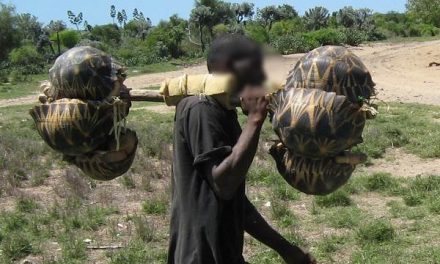
First Red Data Book on Birds

Renowned ornithologist and conservation pioneer, Dr Chris Brown with the new Minister of Environment and Tourism, Hon Pohamba Shifeta.
“Getting policies and laws in place, however, is just the start of the process. To make an impact on the ground and to achieve the necessary environmental and conservation objectives within the broader sustainable development goal requires a range of tools. Accurate information is essential. So are clear strategies and action plans. Red Data Books play an important role in providing detailed analysis at the species level using agreed international criteria, compiling key up-to-date information and making firm recommendations for conservation,” said the minister.
This Red Data Book on the birds of Namibia is the first comprehensive Red Data Book for Namibia. It has assessed the conservation status of all 677 recorded species rating them from “Least Concern” (i.e. not considered to be under any threat), through “Near Threatened”, “Vulnerable”, “Endangered”, “Critically Endangered” and “Nationally Extinct”.
The Red Data Book is a valuable tool in conservation management.
Its purpose is to direct attention and resources to the greatest conservation priorities so that the future of threatened species and their habitats can be protected and safeguarded. The ultimate goal is to improve the status of these species to the point where they can all be removed from the Red List and join the group of species of “Least Concern”.
The production of this first comprehensive Red Data Book on the birds of Namibia arose from a partnership between the ministry, the Namibia Nature Foundation, local business, international partners, the Namibia Bird Club and the many urban and rural citizen science contributors who submitted data over many decades.
The project is financially supported by Dundee Precious Metals and the Namibia Nature Foundation.











































